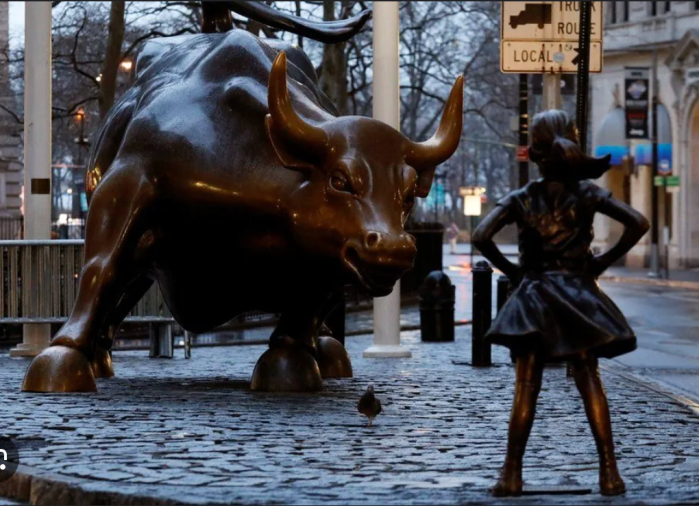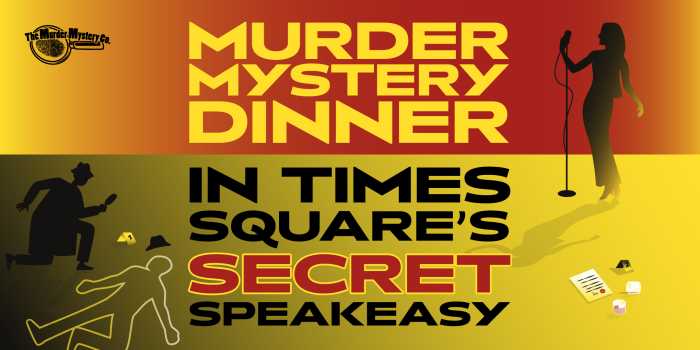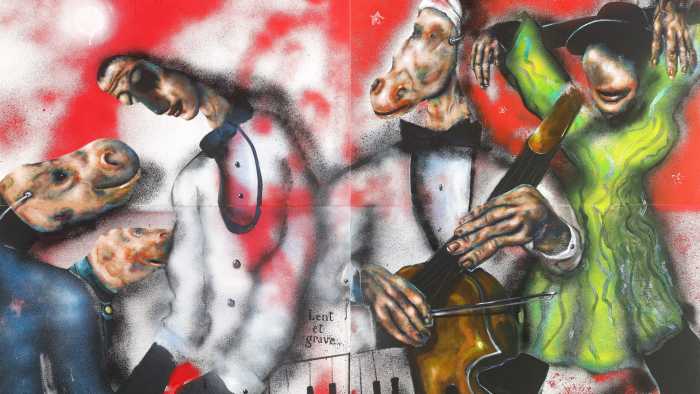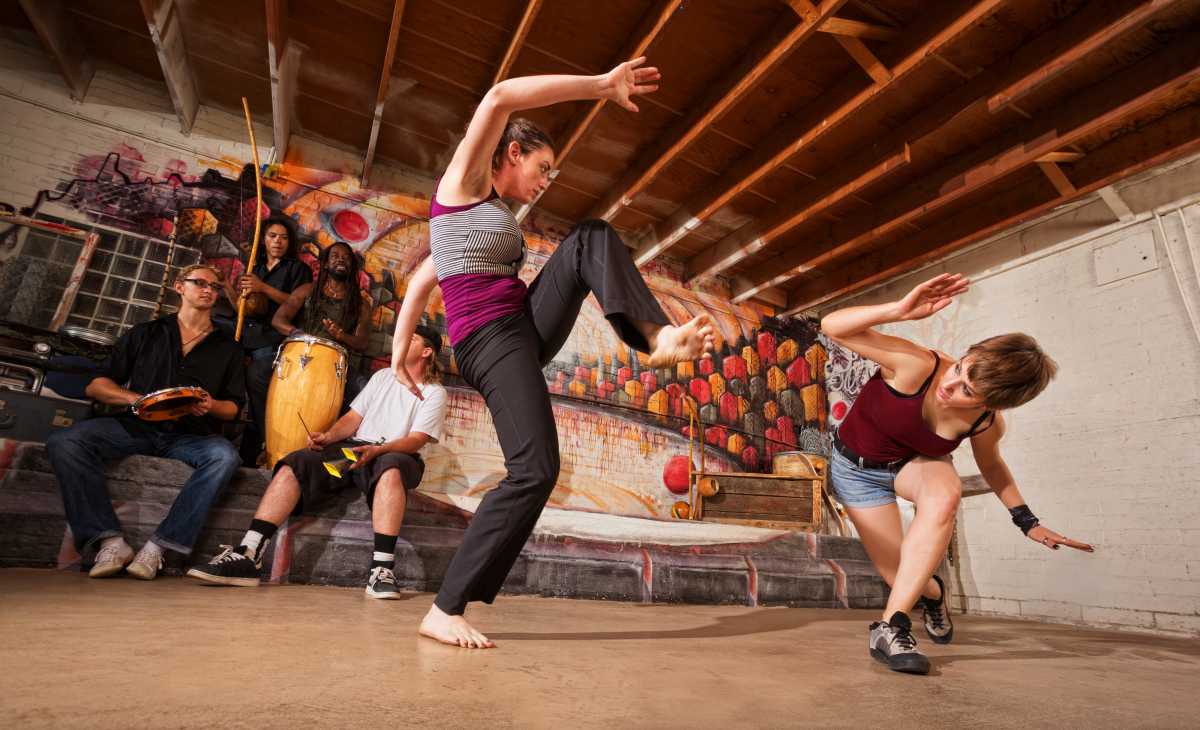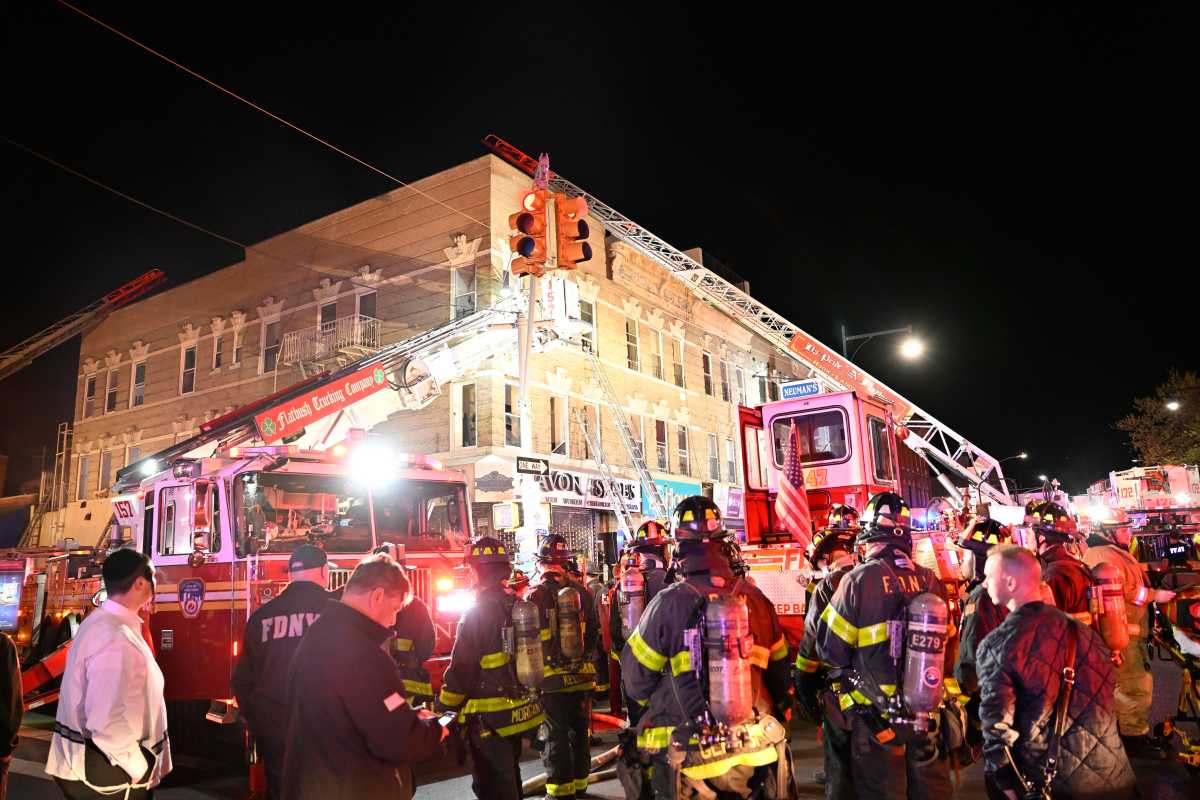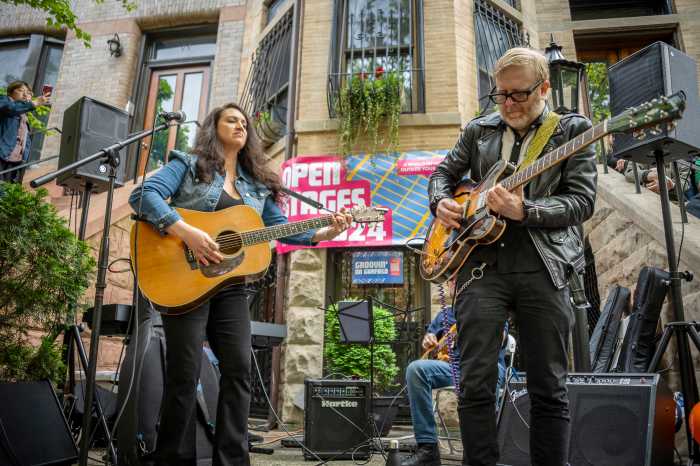By Ellen Keohane
Dressed in fishnet stockings and a vinyl bustier, a woman shimmied on a go-go platform in an East Village club on a recent Saturday night. Below her, 30 or so people — mostly dressed in black — swung their arms, and stomped their combat boot-clad feet to the music. A bleached-blond-and-pink-haired man moved his arms in rhythm with the music; the glow sticks in his hands creating streaks of light in the dark club.
Because of New York’s cabaret laws, it’s really difficult to find places to dance, said 30-year-old Brian Stillman, the head of a nonprofit, all-volunteer group that organizes monthly Goth/industrial dance nights in Manhattan.
The group has been organizing dances for close to seven years. During that time, they’ve bounced from club to club, and night to night, depending on what space they can get. At one point, they went six months without finding a place, Stillman said. The club that currently hosts this group’s monthly dance, does not have a cabaret license, and is therefore not identified in this article.
Between 200 to 500 people show up for the monthly events, Stillman said. Although there is no dress code, most people who attend the dance nights, as Saturday night’s crowd demonstrated, dress up in vinyl, velvet and leather — primarily in black and red.
Since 1926, it has been illegal to dance in a drinking and/or eating establishment in New York City that doesn’t have a cabaret license. Currently, there are only 273 legally operating clubs with cabaret licenses in all five boroughs, according to the city’s Department of Consumer Affairs.
“It seems like an archaic law,” said Aric Bakshy, as he leaned against the club’s bar. Bakshy, a 28-year-old emergency-room doctor from Chicago, said he was shocked to learn about New York’s cabaret laws when he moved here two months ago.
The city selectively enforces the law when necessary, said James Habacker, owner of the Lower East Side’s Slipper Room, a burlesque club and cocktail lounge that was padlocked for illegal dancing in 2002. The city later allowed the Slipper Room to reopen, but only after Habacker lost close to $6,000 in business and shelled out $4,000 in lawyer’s fees. “Everyone admits it’s absurd not to be able to dance in New York City,” Habacker said. But the city doesn’t want to take the law off the books because it’s a powerful tool they can use to shut down dangerous places, he said.
But the law may soon change. On June 23, a group of plaintiffs representing an array of dance genres filed a lawsuit against the city claiming that cabaret laws deprive them of the right of free expression. The plaintiffs include Meredith Stead, a professional dancer and dance teacher; John Festa, a West Coast swing dancer; Byron Cox, a house music dancer; Gotham West Coast Swing Club, a nonprofit corporation that promotes swing dancing; and Ian Dutton, a member of the Goth/industrial music community.
Their next court date is scheduled for Sept. 2, when the city will offer its initial response to the lawsuit. “[The city] will probably move to dismiss. Meantime, they say they are considering changing the law,” said Paul Chevigny, a New York University law professor. Chevigny is representing the plaintiffs along with Norman Siegel, former New York Civil Liberties Union executive director and a candidate for public advocate, and Steven Hyman of McLaughlin and Stern.
Cabaret laws limit the number of nightclub spaces in the city and those places that have licenses tend to cater to people with a lot of money, said Dutton, a 35-year-old airplane pilot for Continental Express, who frequently attends the monthly Goth/industrial dances with his wife Shea Hovey, 29.
Many clubs are hesitant to host Goth-themed nights due to the possibility of low turnouts and modest alcohol sales. “It’s a specific scene, so when we take over a night normal patrons tend not to show,” said Stillman, who wore a Ministry T-shirt.
“Goths also have a reputation for not drinking, which is ridiculous,” added Mary Hawkins, a 27-year-old animator. Indeed, most of the people at the club had a drink in hand.
When first exploring the possibility of a lawsuit, Chevigny and others involved reached out to the dance community, Chevigny said. Dutton, who is also a public member of Community Board 2, was one of the ones who responded. “We went to one of the dances and were impressed with the appearances of people and the dancing. We wanted the suit to be representative, and Goth seems to fit,” Chevigny said.
“Listening to bands and dancing are the two greatest driving forces of what is Goth,” said Voltaire, a 38-year-old musician and author of the book “What is Goth?” “So to go to a club and not being able to dance is taking half of the experience out of the night.”
A lot of people associate Goth with Marilyn Manson, which many Goths object to, Voltaire says in his book. While Manson does dress according to Goth aesthetics — black clothing, white face, black lipstick — many feel he is too commercial to be Goth.
Goth music can be folk or gypsy, sounding, ethereal, electronic, industrial, instrumental or acoustic — it covers so much, said Hovey, who works for Projekt, a Goth record label based in New York. “It’s kind of like an obscenity, you know it when you hear it,” she said.
“There’s a very wide range of Goth styles. It’s hard to say what is and isn’t Goth,” Dutton said. “Black seems to be a common theme.”
In his book, Voltaire attempts to not-so-seriously break down the Goth aesthetic into various categories, including, but not limited to “Romantigoths,” who are attracted to Victorian-era, “old-world” styles; “Deathrockers,” who tend to dress more punk; “CyberGoths,” who wear more futuristic clothing and generally have facial piercings; and “Vampyres,” who wear custom-made fangs and capes.
“You get gawked at a lot,” said Dutton. “It’s hard to be different.” When people are curious and interested, it’s a positive thing, but sometimes it turns into finger-pointing, he said. The scene seems more accepted in Europe — particularly in Germany, which hosts Treffen, the World’s largest annual festival for “dark culture,” in Leipzig.
In New York, the Goth community is pretty small. Everyone knows everybody, said Dutton. “It’s rare that people marry outside of the scene,” Dutton said, then laughed. “That makes us sound like a cult.”
“It’s become a family for me,” said Angel Butts, 31, who has been part of the Goth scene in New York since moving here 15 years ago. Butts, who is working on her Ph.D. in sociology at Rutgers University, is getting married this September to the Goth/industrial group’s resident D.J., Trevor George.
While there are other Goth dance nights in Manhattan, like Albion on Saturday nights at Downtime, many attract a younger crowd or are not as friendly, said Dutton. And there are also a variety of Goth clubs in New Jersey — which does not require a cabaret license. Yet, even the prospect of cabaret law-free clubs isn’t enough to draw Gotham Goths across the Hudson.
“I live in New York, why would I want to go to Jersey?” said Hovey.








